Q
How to reset the tire pressure sensor of Subaru Crosstrek?
To reset the tyre pressure sensor in Subaru Crosstrek , the general steps are as follows: First, make sure the vehicle is in parking mode and the power is on. Find the settings button inside the car and enter the vehicle settings menu. Look for the option related to tyres in the menu, which may be marked as "Tire Pressure" or a similar name. After selecting this option, follow the prompts on the screen. There will usually be an option for "Reset" or "Calibration". Confirm your selection to complete the reset of the tyre pressure sensor. However, it should be noted that different years and configurations of Subaru Crosstrek may have slight differences in operation details.
Special Disclaimer: This content is published by users and does not represent the views or position of PCauto.
Related Q&A
Q
What is X Mode on Subaru Crosstrek?
On the Subaru Crosstrek, X Mode is a special driving mode feature. It is primarily used to enhance the vehicle's driving ability under complex and adverse road conditions, such as slippery mud and steep slopes. When X Mode is activated, the vehicle's electronic system will optimize and coordinate engine output, transmission shift logic, torque distribution of the four-wheel drive system, and the braking system. This provides better traction, stability, and passability to help drivers more easily cope with challenging driving environments.
Q
What type of vehicle is a Subaru Crosstrek?
The Subaru Crosstrek, known as the Subaru XV in the Malaysian market, is a compact crossover SUV that balances the handling of a sedan with the practicality of an SUV, making it suitable for urban commuting and light off-road driving. It features a higher chassis compared to traditional sedans (with a ground clearance of approximately 220mm), comes standard with the Symmetrical AWD all-wheel-drive system, and is equipped with suspension tuning that adapts well to various road conditions, excelling during Malaysia's rainy season or in mountainous terrains.
Unlike pure off-road vehicles such as the Toyota Fortuner, the Crosstrek/XV places greater emphasis on on-road comfort, while still offering superior off-pavement capability compared to city SUVs like the Honda HR-V or Toyota Corolla Cross. This makes it an excellent choice for consumers who enjoy weekend road trips to explore the countryside. Its signature horizontally opposed engine (Boxer Engine) design also grants the vehicle a lower center of gravity, enhancing stability and handling performance.
Q
What are the different models of Subaru Crosstrek?
The Subaru Crosstrek, also known as the Subaru XV, primarily offers various trim levels and powertrain options for consumers; however, a hybrid version is not currently available through official channels. The commonly found local models include the 2.0i and 2.0i-P, with the 2.0i-P typically being the higher-end variant. It comes equipped with a more comprehensive array of comfort and safety technologies, such as a larger central touchscreen, a sunroof, leather seats, and a more advanced EyeSight driver assistance system that includes features like adaptive cruise control, automatic emergency braking, and lane-keeping assist.
In terms of powertrains, both variants are equipped with a 2.0L horizontally opposed naturally aspirated engine (Boxer Engine), paired with a Lineartronic CVT transmission, and feature a standard Symmetrical AWD all-wheel-drive system that ensures stability in handling and light off-road capability. If you're interested in a hybrid option, you may consider exploring the parallel import market; however, it’s essential to be aware of the differences in warranty and after-sales support. Compared to other Japanese SUVs in the same segment, the Crosstrek/XV places a greater emphasis on all-wheel-drive performance and driving enjoyment, making it a suitable choice for outdoor driving enthusiasts.
Q
What is the difference between Subaru Forester and Crosstrek?
The Subaru Forester and Crosstrek differ in several key aspects. The Forester is a midsize SUV that offers more spacious accommodations, particularly in the rear seat and cargo area, making it ideal for family travel. Its power performance are relatively robust, allowing it to handle a variety of road conditions with ease. In contrast, the Crosstrek is a compact SUV that features a smaller, more agile body, enhancing convenience for city driving and providing superior maneuverability.
In terms of exterior design, the Forester exudes a sense of grandeur, while the Crosstrek presents a more sporty and stylish appearance. Inside, the Forester focuses on comfort and practicality, whereas the Crosstrek emphasizes a youthful and energetic vibe. Ultimately, the choice between the two models depends on individual needs and usage scenarios.
Q
What is the standard tire pressure on a Subaru Crosstrek?
The standard tire pressure for the Subaru Crosstrek generally ranges from 2.3 to 2.5 bar for the front tires and approximately 2.5 to 2.7 bar for the rear tires. However, it’s important to consider factors such as vehicle load and driving conditions when determining the specific tire pressure. In Malaysia's climate and road conditions, it is advisable to regularly check tire pressure to ensure safe driving and optimal vehicle performance.
Q
Which is better?Honda HRV or Subaru Crosstrek?
Both the Honda HRV and the Subaru Crosstrek have their own advantages and disadvantages. The Honda HRV is favored for its excellent fuel economy, spacious interior, and high reliability. Its interior design is practical, and the configuration can meet daily needs. The Subaru Crosstrek, on the other hand, performs well in the four-wheel-drive system, and it has good off-road performance and passability. Its safety features are usually abundant. However, which one is better depends on your specific needs. If you place greater emphasis on daily commuting and economy, the Honda HRV might be more suitable. If you have a lot of outdoor trips or have high requirements for four-wheel drive performance, the Subaru Crosstrek would be a good choice.
Q
What is the ground clearance of the Subaru Crosstrek?
The Subaru Crosstrek, known as the XV in the Malaysian market, boasts a ground clearance of 220mm, which is relatively high for its class of SUVs. This feature enhances its mild off-road capability and adaptability to rugged terrain. Such a design makes it particularly well-suited for the less-than-ideal road conditions found in some rural areas of Malaysia or on slippery surfaces during the rainy season. Coupled with Subaru's signature Symmetrical AWD system, the Crosstrek offers improved stability and passability.
If you frequently travel on unpaved roads, in mountainous regions, or often encounter flooded areas, the high clearance of the Crosstrek/XV provides a practical advantage. In contrast, other Japanese compact SUVs in the same class, like the Honda HR-V (approximately 185mm) and the Toyota Corolla Cross (around 161mm), have lower ground clearances, leaning more towards on-road driving. If you value a crossover SUV's ability to handle various terrains, visiting a local Subaru dealership to experience the vehicle's height and maneuverability firsthand is highly recommended.
Q
How to open the hood of Subaru Crosstrek?
To open the hood of the Subaru Crosstrek, first, locate the release handle of hood in the cabin, usually near the driver's side footwell. Pull this handle and you'll hear the sound of the hood popping up. Then walk to the front of the car, reach out to a movable lever in the middle of the front end of the hood, and push it to the left, you can then lift up the hood.
Q
What color options are available for the Subaru Crosstrek?
The Subaru Crosstrek is typically available in a variety of colors in Malaysia, including Pearl White, Crystal Black, Sky Blue, Passion Red, and Metallic Silver. The types of colors may vary depending on the sales period and batch.
Q
What gasoline does Subaru Crosstrek use?
The Subaru Crosstrek in Malaysia typically uses petrol. Commonly, unleaded petrol suitable for local standards is used. The specific grade may vary due to local fuel supply and vehicle configuration, generally being 95 or 97 unleaded petrol.
Latest Q&A
Q
Does Toyota Harrier Support Apple Carplay?
The Toyota Harrier does come with Apple CarPlay functionality in some models and model years, depending on the vehicle's configuration and release year. For instance, some versions of the Harrier launched in 2020 and later support this feature in the Malaysian market, allowing users to seamlessly connect their iPhones to the car's infotainment system and use apps like navigation and music. Malaysian consumers should check the specifications of the vehicle's infotainment system when making a purchase, as different versions may vary. The entry - level models might not have it as standard, but it can be added through a later upgrade.
Moreover, the addition of Apple CarPlay has significantly enhanced the driving experience, especially for users who rely on their phone's ecosystem. Toyota has also been gradually rolling out this technology across multiple models in recent years, such as the Corolla Cross and RAV4, which shows the brand's emphasis on meeting the demand for smart connectivity.
If you're thinking about buying a used or a new Harrier, it's advisable to directly inquire with local dealers about the specific configurations or take a test drive to experience the system's smooth operation, ensuring it meets your personal usage habits.
Q
What is the PCD Size of Toyota Harrier?
The PCD (Pitch Circle Diameter) of the Toyota Harrier is typically 5x114.3mm. This means that the diameter of the circle formed by the five bolt holes on the wheel hub is 114.3mm. This specification is common in many Toyota models, including some Camry and RAV4 models. It is suitable for wheels with a center bore diameter of 60.1mm, and the bolt thread specification is generally M12x1.5.
For Malaysian car owners, when choosing to modify wheels, in addition to the PCD, they also need to pay attention to whether the offset value (ET value) and center bore size of the wheels match those of the original vehicle to ensure driving safety and avoid vibration problems. The road conditions in Malaysia are variable. It is recommended to choose lightweight and high - strength wheel materials, such as aluminum alloy, which can not only improve handling but also adapt to the local climate.
If you need to replace the wheels, you can give priority to products certified by JWL or VIA. This type of certification can ensure that the wheels meet international safety standards. At the same time, it is recommended to have them installed in a professional shop and perform dynamic balance adjustment to extend the tire life and ensure driving stability.
Q
What is the Gearbox Type of Toyota Harrier?
The Toyota Harrier offers two types of transmissions in the Malaysian market, depending on the powertrain. Petrol-powered models are typically equipped with a Direct Shift-CVT, which combines the smoothness of a traditional CVT with simulated gear shifts for more responsive acceleration. Notably, it uses a physical first gear for better low-speed performance, reducing the rubber-band effect often associated with conventional CVTs.
Hybrid variants, on the other hand, feature an e-CVT, an electronically controlled continuously variable transmission optimized for hybrid systems. It uses a planetary gear set to deliver efficient power distribution and prioritize fuel economy.
Both transmission types have been locally tuned to suit Malaysia’s hot and humid climate, ensuring durability and smooth operation. Toyota-authorized service centers provide professional maintenance support, and regular checks of transmission fluid are recommended to maintain optimal performance.
For buyers, the choice depends on driving habits: the hybrid's e-CVT is ideal for daily urban commuting and fuel savings, while the petrol model’s Direct Shift-CVT offers a more dynamic driving experience.
Q
What kind of engine does the Toyota Harrier have?
The Toyota Harrier offers a range of engine options to suit different driving needs. Some models are equipped with a 2.0-liter naturally aspirated (NA) inline-4 engine. For example, the 2023 version delivers 173 PS, 127.2 kW at 6600 rpm, and 203 Nm of torque at 4900 rpm.
A turbocharged 2.0-liter engine was also previously available, producing up to 231 PS, with peak power at 5200 rpm and peak torque starting as low as 1650 rpm.
Depending on the engine variant, the Harrier is paired with either a CVT or automatic transmission, and most models feature front-wheel drive. These engine configurations offer a balance between everyday comfort and responsive performance to meet the preferences of a wide range of drivers.
Q
What is the engine displacement of the Toyota Harrier?
The Toyota Harrier comes in different models with varying displacements. Commonly, there are models with a 2.0L displacement, and the corresponding engine displacements are 1987mL or 1998mL. For example, models like the 2023 Toyota Harrier 2.0 Luxury and the 2023 Toyota Harrier 2.0 Luxury SE all have a displacement of 1987mL; the displacements of the 2018 Toyota Harrier 2.0T Premium and the 2018 Toyota Harrier 2.0T Luxury are 1998mL. CC is the abbreviation for cubic centimeter, which is equivalent to milliliters (mL) in the automotive field. So, the engines of these 2.0L-displacement Toyota Harriers are 1987CC or 1998CC. Additionally, there are reports that the next-generation models may be the first to be equipped with a newly developed 1.5-liter (1500CC) engine, and it will offer both Hybrid gasoline - electric and PHEV plug-in hybrid options.
View MoreRelated News
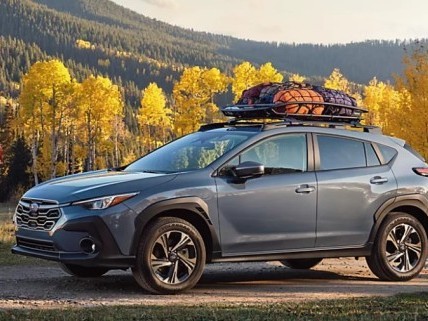
Brand new hybrid system, range over 1000km! New model Subaru Crosstrek coming in December!
RobertOct 22, 2024
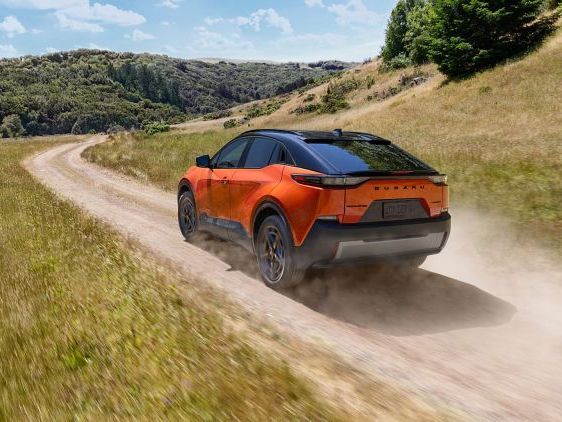
Uncharted is Subaru's first front-wheel-drive car, with a range of up to 482 kilometers.
MichaelJul 18, 2025
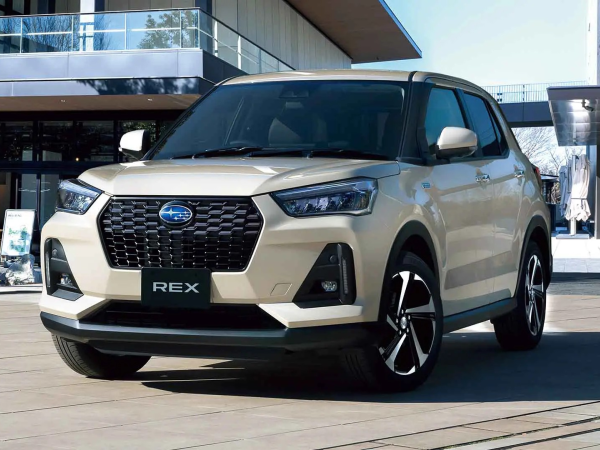
SUBARU REX Hybrid vs Nissan e-POWER: Spot the Difference!
WilliamJun 24, 2025
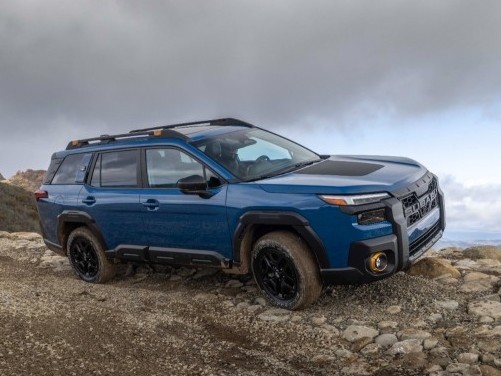
All-New Subaru Outback Debuts with SUV-Inspired Styling
JohnApr 22, 2025
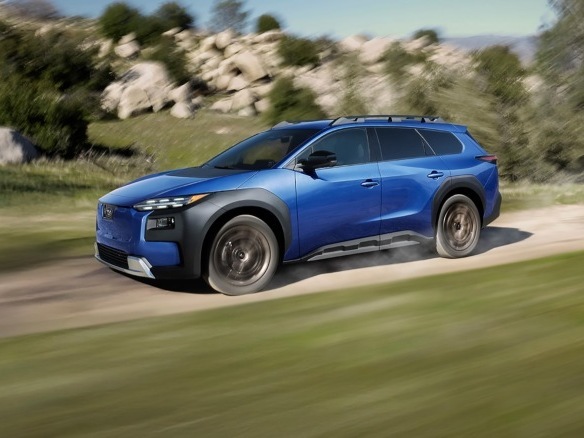
Subaru's Fastest Mass-Production Vehicle Debuted in New York: 375 HP!
MichaelApr 17, 2025
View More


















Pros
Cons